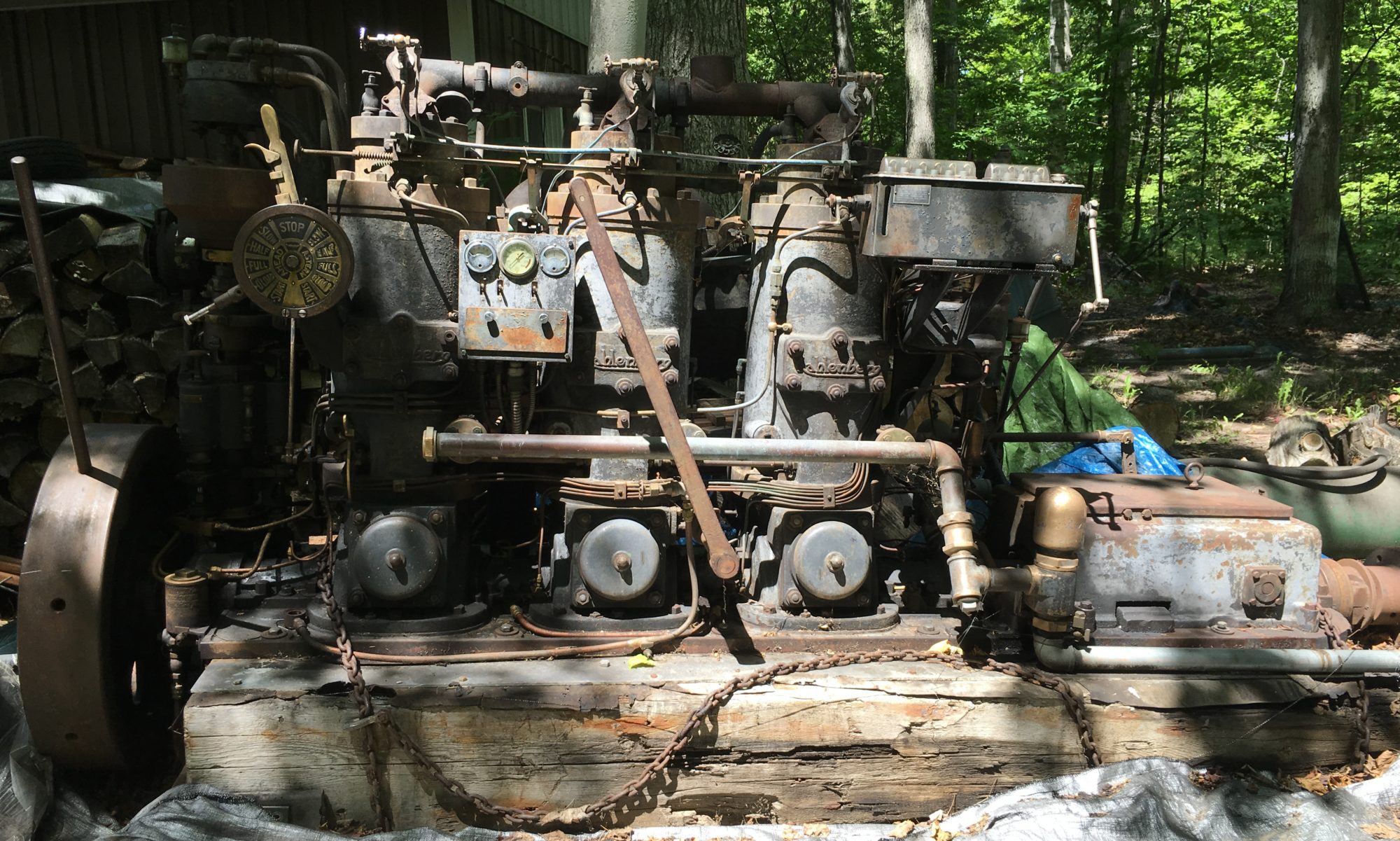At some point in early August I realized there weren’t a lot of parts left to put on the engine and that it was actually going to get done. I kicked into overdrive and worked most every spare minute. I created a final punch list, which was a little bit of reality hit as the list was still pretty long. But I could smell it.
It was time to get the engine on a trailer. I didn’t want to add any more weight because my lifting mechanism wasn’t suitable for the completed engine (about 7200 pounds).

Once on the trailer, we installed the transmission. I don’t know what it weighs but it is heavy.

Next up was the flywheel. I had not got around to painting it prior to now. It needed a good cleaning and a light sanding. It came out looking good.


The engine came to me with some missing pieces on the throttle so there was still some machining to do. A conspicuous piece is the throttle handle. I was told this broke off a long time ago. There was a large bolt in its place but I wanted it to look original. A few years ago, I dimensioned one in the Gills Rock maritime museum so I had something to work from. Although lacking patina and wear, it came out looking good.


I had to make the metal stop behind the throttle lock. Again, I had dimensions from one in the maritime museum.


I’m not very artistic but I wanted to set off the cylinder cleanout port covers. There are very few parts which have the Kahlenberg name on them but these are prominent on the engine so I took the time to highlight the lettering.

Throughout this entire project, which included a house move and having the Kahlenberg parts in storage for two years, I’ve done a good job keeping parts organized, labeled and together. But I’ve known for quite a few weeks that I was missing two connecting rod nuts. I hadn’t misplaced anything else but I picked a heck of an item to lose. Each rod bearing is double nutted on each side. There are six short and six tall nuts. Two of the tall ones were not with the others. I spent a lot of hours scouring the shop but no luck. Regardless of what happened, I needed to replace them. Since they are hidden in the engine, I was going to buy new ones even if they didn’t exactly match the originals. But at that point I discovered the nuts have a bastard thread. They are 13/16″ thread with 11 threads per inch. Even Victor Machine, which in their catalog has 13 different thread sizes for a 13/16″ tap, doesn’t have one for 11tpi. I have no idea why Kahlenberg would have used such an odd thread (there might be a German engineering joke in there somewhere). I had no choice but to make my own. Please excuse the chatter in the threads. My boring bar was too small for this job but I didn’t feel like waiting to order a new one



